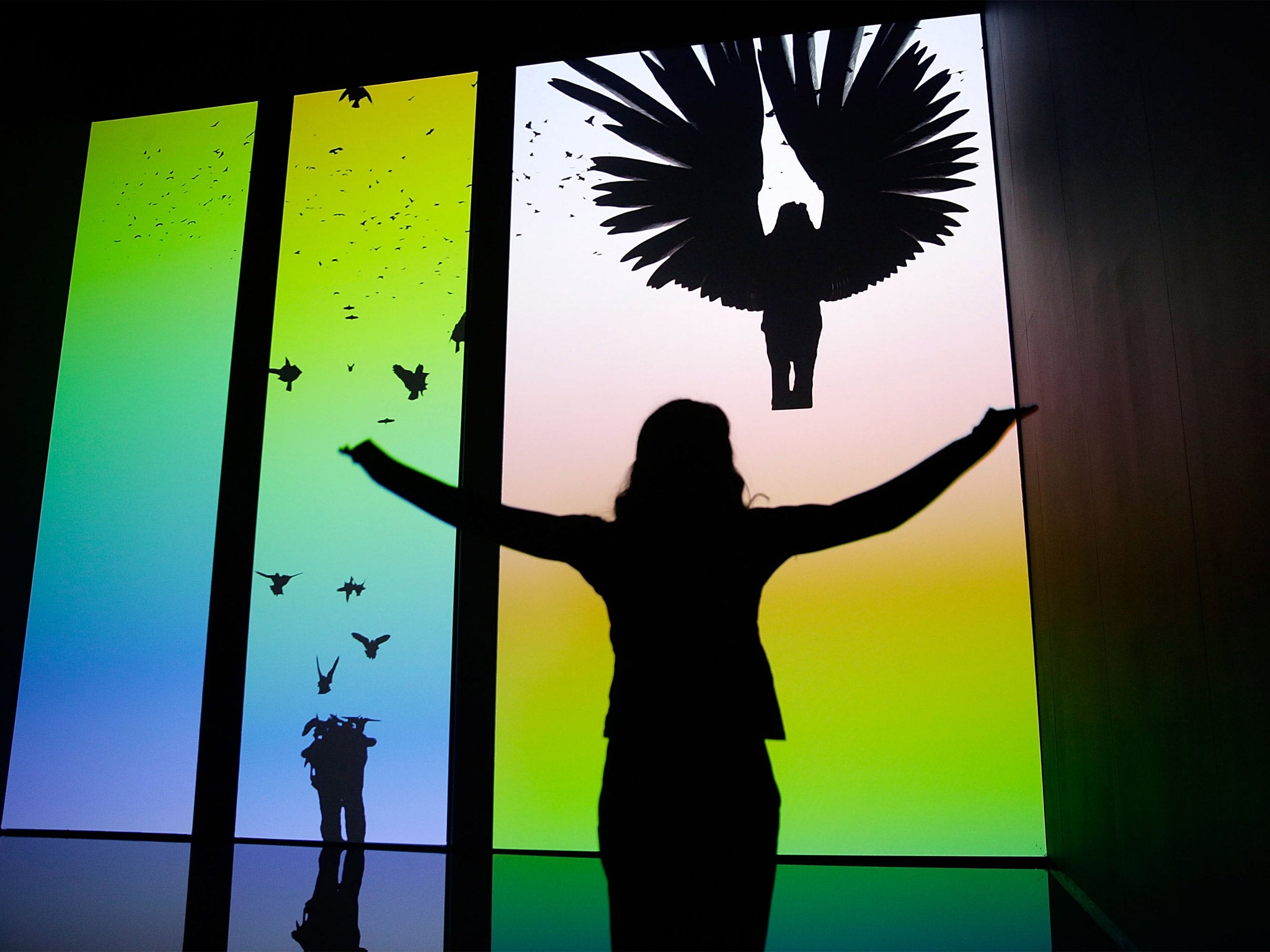Digital Revolution exhibition shows major breakthroughs in neuroscience - including a game played only with your eyes

Your support helps us to tell the story
This election is still a dead heat, according to most polls. In a fight with such wafer-thin margins, we need reporters on the ground talking to the people Trump and Harris are courting. Your support allows us to keep sending journalists to the story.
The Independent is trusted by 27 million Americans from across the entire political spectrum every month. Unlike many other quality news outlets, we choose not to lock you out of our reporting and analysis with paywalls. But quality journalism must still be paid for.
Help us keep bring these critical stories to light. Your support makes all the difference.
Cutting-edge neuroscience technology from the US has inspired the development of a game controlled using only the players' eyes; one of the exhibits at a new digital exhibition at London’s Barbican.
Not Impossible Now, a company based in San Francisco, has developed glasses that read the eye movement of people who are paralysed, allowing them to communicate and even write.
It forms part of the exhibition Digital Revolution, which opens at the Barbican tomorrow, and includes a display showing the technology behind Gravity and a digital music installation by Will.i.am.
Not Impossible Now has shown off its technology with a first-person robot shooter game in which the gun is controlled using eye sensors.
The breakthrough for the technology came earlier this year when the company developed a communication system for American graffiti artist Tempt One, who was diagnosed with Motor Neuron Disease in 2008, which deprived him of the ability to move his limbs and speech.
After using an alphabetic board for years, Tempt One can now communicate through the use of an “eye writer”, using built-in sensors that monitor brainwaves and information coming from the eyes and transmitted to a pen attached to the glasses.
Elliot Rotek, 41, co-founder of Not Impossible Now, said: “The Tempt One project has been an incredible success. It’s incredible what this man has managed to do, and now we want to continue to develop this technology both for medical and entertainment purposes.”
Elliot continued: “To be involved with something so institutionally recognised, we feel like indie upstarts, but it’s an incredible experience!”
Other displays range from the development of video games through the decades, to the future of sound-vision, and even reusable technology, where recycled mobile phones were being turned into robotic birds.
The exhibition includes displays of technology in art form, including a laser light show provided by arts company Umbrellium, in which Kinect sensors allow users to "move" lights around them and shape them at will.
Nitipak Samsen, 35, a designer in the company from Thailand, said: “With the lights, we didn’t know what we were making, and it was a case of trial and error.
“Our theme is to say: ‘What is real? What is relevant and what is irrelevant?’ So people can bring together their own shapes.”
Conrad Bodman, guest curator for the exhibition, said: “We’re trying to look at the breadth of technology across decades, including projects we’re beginning to visualise in the future. There are a series of key themes here for the 21st century.”
Join our commenting forum
Join thought-provoking conversations, follow other Independent readers and see their replies
Comments